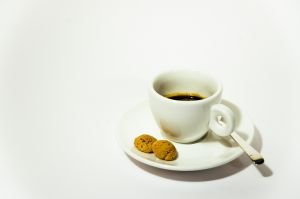General Articles
How Do you Like Yours?

The Riviera would not be the same without coffee and coffee shops. As you wonder the streets of any town or village, the aroma of pure ground coffee is sure to have you raising your nose to catch the scent. It is addictive and so soothing and a condonable sedative. But the big question is, 'How do you like yours?'
On the Riviera you can be spoilt with a wide variety of choice. For the French and Italians, it is a question of culture. Life does not begin until you have had your one shot wonder. Down in one and ready to take on the day ahead.
If we start in Italy, the most popular coffee is the espresso. It is a very short coffee, full of flavour and sure to wake every dorment cell that exists in your body. Italians generally don't drink coffee with any meal except breakfast. Coffee is usually ordered after a meal. To order an espresso in Italy, you simply ask for a "caffe".
Italians normally stand by the bar and drink their coffee as it is cheaper. Prices vary from €1 to €1.50 and can be much much more if you sit at a table. The Italians are the most renowned for the Cappuccino, which is a subtle blend of coffee and chocolate, served frothy with a sprinkling of chocolate flakes or cocoa powder on the top. Cafe Latte is popular in Italy now which is a mixture of milk and water, half and half. It was the Venetian traders that first brought coffee to Europe in 1615. When it was first introduced in Italy, the drinking of coffee was opposed. It was known as the Devil's Drink. Not surprisingly, the Church tried to oppose the habit of going to coffee shops, which were called 'places of perdition'. The Pope, Clement VII tried the 'Devil’s drink' before condemning it completely. He was so enthusiastic that he immediately gave it his blessing and rebaptised it as a 'Christian drink'.
Here are somemore types of coffee served in Italy:
Caffè (Espresso): Small cup of strong coffee, topped with a caramel colored crema.
Caffè latte: Strong coffee with hot milk, served with a sugar cube to the side.
Caffè Americano: Coffee American style, but stronger, served in a large cup.
Caffè corretto: This coffee is "corrected" with a dash of cognac or spirits.
Caffè doppio: Double Espresso.
Caffè freddo: Iced Coffee
Caffè Hag: Decaffeinated coffee.
Caffè macchiato: Espresso with just a drop of steamed milk on top.
Caffè stretto: Espresso with less water.
Cappuccino: Espresso infused with the foam of steamed milk. It's usually served in the morning. NEVER after lunch or dinner.
Granita di caffe con panna: Frozen, iced beverage (slush) topped with whipped cream.
There are several major brands of coffee served in bars, cafes and restaurants; Illy, Lavazza, Mauro, Mocambo and Segafredo are the most common. And in Italian homes coffee is prepared using a moka coffeepot or espresso machine.

In France, the first coffee house opened in Paris in 1672 and since then coffee drinking in France has come a long way. Like in Italy there is a variety of coffee such as Cafe au Lait and Espresso you can now choose from a variety of flavors to suit your mood such as a Cafe Noisette which is a rich dark coffee with hazelnut flavor and a dash of cream, or a coffee with a drop of spirit added is sure to raise your mood.
Very much in the same way in Italy, if you order 'un cafè', it will be black. Here are some of the basic types of coffee served at cafes and bars in France.
Cafè: Espresso, which is just plain coffee, but strong.
Cafè American: Filtered coffee, similar to American coffee or an espresso with a pot of hot water to dilute.
Cafè au lait: This coffee is mixed with an equal amount of steamed milk.
Cafè Creme: A large cup of coffee with hot cream.
Cafè Decafeine: Decaffeinated coffee.
Cafè Noisette: Small espresso with a dash of milk or cream, which makes it hazelnut colored.
In many French households, coffee is made with an electric coffee filter maker. Restaurants and bars use an espresso machine. The quality of espresso coffee depends on many variables such as origin of coffee, freshness, roasting and the blending of the coffee beans. It also depends on the equipment used, water quality, temperature, humidity and skill in preparing the espresso. Some favorite brands of coffee served in France are Illy and Richard.
How to say coffee in so many languages:
French: cafè - Spanish: cafe - Italian: caffè - Portuguese: cafè - Rumanian: cafenea - German: café - Dutch: cafè - English: coffee - Swedish: kafè - Norwegian: kafè - Polish: kawiarnia - Slovenian: kavarna - Serbo Croat: kafana - Hungarian: kavehaz - Finnish; kahvila - Turkish: hahve - Indonesian: kedai copi - Esperanto: kafcjo - Russian: kafiè - Greek: kafenìon - Arabic: qahwa - Hebrew: bait hahva - Yiddish: kavehois - Japanese: kafee - Swahili: mkaawa - Persian: ghahve - Hindi: kaafii - Bengali: kophi - Cingalese: kpi - Tamil: kaapi - Burmese: gra-pi - Thai: gahfaa - Lao: gahfeh - Cambodian: gafe - Vietnamese: cà-phe - Mandarin Chinese: kafei - Cantonese: gafe - Korean: kopi - Malay: kopi - Tagalog kapè.
Here's a little challenge for you to do on how to decorate your cappuccino.
However you take yours, savour the experience as it is one to cherish.



